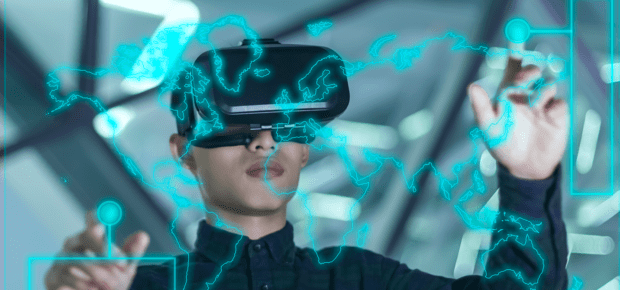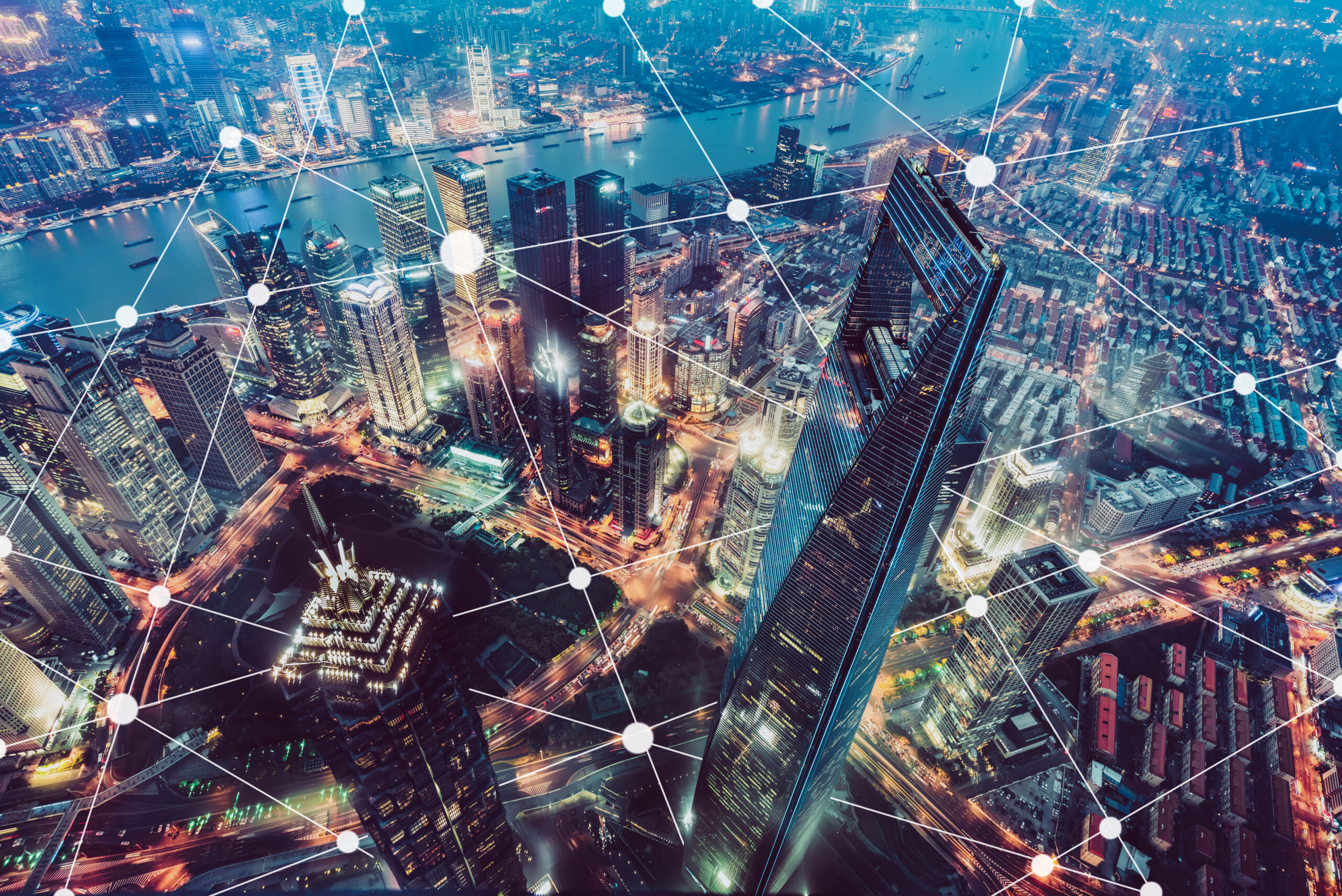May 29, 2018
Mixed reality represents the blending of the real world and the virtual world, creating immersive experiences where 3D digital images can be represented alongside physical objects. Unlike virtual reality, mixed reality provides overlays on what you’re seeing, rather than a full simulation. These overlays can be useful on a number of fronts, and can be customized to your location and interests. You’ll be able to utilize that information in a number of ways, both at work and in your free time – we’ll explore two of them here.
Manufacturing
Assembling something like an airplane is far from a simple proposition. Mixed reality stands to help increase productivity in these detailed environments: The Institute has covered a set of glasses that use a camera to scan barcodes, allowing the installer to see the schematics and view the marking zone for a specific part.
Todd Richmond, the director of advanced prototypes at the University of Southern California Institute for Creative Technologies, is eyeing an even more profound shift: “We’ve been working on a process called mixed-reality prototyping, where we’re trying to understand human-machine teaming. Specifically, we’re looking at how autonomous drones can react to human behavior.” This process would allow designers to test products in a virtual environment before building a physical prototype, and stands to transform industrial design.
Health
Jay Iorio, a technology strategist for the IEEE Standards Association, spoke with Beyond Standards about the impact mixed reality could have on basic health: “You might be trying to eat healthy, and, when you look at restaurants on the street when wearing a device, the lights may be dim on the donut shop but bright at the salad bar down the street.”
Richmond sees a an important health application being the ability to interact with a virtual version of your doctor, which “can help to determine if you actually need to go to the emergency room” using the data from your wearable sensors.
Next Steps
In terms of a timeline, this technology might not be as far off as you might think: “We’re seeing equipment evolve month by month, and it’s getting faster, higher quality, less cumbersome and a lot cheaper. […] By the middle of the next decade, I believe we will see mixed-reality equipment being used for things we can’t even imagine today,” says Iorio.
IEEE is playing a central role in understanding the implications of mixed reality. For more information, watch “Mixed Reality—The Future of Our World” and read the IEEE Global Initiative on Ethics of Autonomous and Intelligent Systems’ “Ethically Aligned Design: A Vision for Prioritizing Human Well-being with Autonomous and Intelligent Systems.”
If you’re looking to get involved, IEEE has a number of mixed reality initiative activities lead by IEEE Future Directions and the IEEE Standards Association. You can visit IEEE at booth 401 at Augmented World Expo 2018 on May 31st and June 1st at the Santa Clara (California) Convention Center. And if you’re attending, be sure to check out IEEE’s panel session featuring industry experts on May 30, 1:30 pm PT in Room K.





 Impact of Technology in 2024
Impact of Technology in 2024 Emerging AI Cybersecurity Challenges and Solutions
Emerging AI Cybersecurity Challenges and Solutions The Skies are Unlimited
The Skies are Unlimited Smart Cities 2030: How Tech is Reshaping Urbanscapes
Smart Cities 2030: How Tech is Reshaping Urbanscapes Impact of Technology 2023
Impact of Technology 2023 Cybersecurity for Life-Changing Innovations
Cybersecurity for Life-Changing Innovations Smarter Wearables Healthier Life
Smarter Wearables Healthier Life Infrastructure In Motion
Infrastructure In Motion The Impact of Tech in 2022 and Beyond
The Impact of Tech in 2022 and Beyond Cybersecurity, Technology and Protecting Our World
Cybersecurity, Technology and Protecting Our World How Technology Helps us Understand Our Health and Wellness
How Technology Helps us Understand Our Health and Wellness The Resilience of Humanity
The Resilience of Humanity Harnessing and Sustaining our Natural Resources
Harnessing and Sustaining our Natural Resources Creating Healthy Spaces Through Technology
Creating Healthy Spaces Through Technology Exceptional Infrastructure Challenges, Technology and Humanity
Exceptional Infrastructure Challenges, Technology and Humanity The Global Impact of IEEE's 802 Standards
The Global Impact of IEEE's 802 Standards Scenes of our Cyber Lives: The Security Threats and Technology Solutions Protecting Us
Scenes of our Cyber Lives: The Security Threats and Technology Solutions Protecting Us How Millennial Parents are Embracing Health and Wellness Technologies for Their Generation Alpha Kids
How Millennial Parents are Embracing Health and Wellness Technologies for Their Generation Alpha Kids Space Exploration, Technology and Our Lives
Space Exploration, Technology and Our Lives Global Innovation and the Environment
Global Innovation and the Environment How Technology, Privacy and Security are Changing Each Other (And Us)
How Technology, Privacy and Security are Changing Each Other (And Us) Find us in booth 31506, LVCC South Hall 3 and experience the Technology Moon Walk
Find us in booth 31506, LVCC South Hall 3 and experience the Technology Moon Walk Virtual and Mixed Reality
Virtual and Mixed Reality How Robots are Improving our Health
How Robots are Improving our Health IEEE Experts and the Robots They are Teaching
IEEE Experts and the Robots They are Teaching See how millennial parents around the world see AI impacting the lives of their tech-infused offspring
See how millennial parents around the world see AI impacting the lives of their tech-infused offspring Take the journey from farm to table and learn how IoT will help us reach the rising demand for food production
Take the journey from farm to table and learn how IoT will help us reach the rising demand for food production Watch technical experts discuss the latest cyber threats
Watch technical experts discuss the latest cyber threats Explore how researchers, teachers, explorers, healthcare and medical professionals use immersive technologies
Explore how researchers, teachers, explorers, healthcare and medical professionals use immersive technologies Follow the timeline to see how Generation AI will be impacted by technology
Follow the timeline to see how Generation AI will be impacted by technology Learn how your IoT data can be used by experiencing a day in a connected life
Learn how your IoT data can be used by experiencing a day in a connected life Listen to technical experts discuss the biggest security threats today
Listen to technical experts discuss the biggest security threats today See how tech has influenced and evolved with the Games
See how tech has influenced and evolved with the Games Enter our virtual home to explore the IoT (Internet of Things) technologies
Enter our virtual home to explore the IoT (Internet of Things) technologies Explore an interactive map showcasing exciting innovations in robotics
Explore an interactive map showcasing exciting innovations in robotics Interactively explore A.I. in recent Hollywood movies
Interactively explore A.I. in recent Hollywood movies Get immersed in technologies that will improve patients' lives
Get immersed in technologies that will improve patients' lives